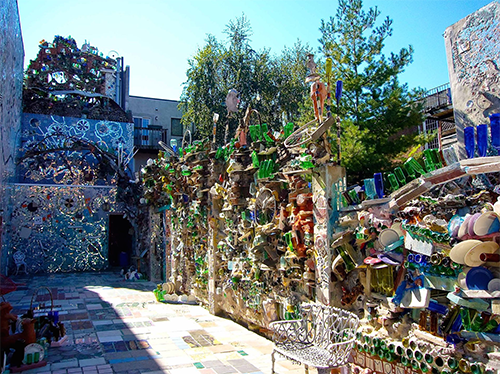Mar 25 2015 Mural making in Philadelphia transforms communities
 Images of urban blight — abandoned houses and graffiti-riddled blocks — have become ubiquitous in depictions of low-income communities in American cities. While some observers think of these communities as places of abandonment and danger, artists and community members alike recognize the potential these spaces have for storytelling and deep community transformation. Artists across the United States have embedded themselves into the fabric of some communities to assist in collectively highlighting the unique artistic and cultural heritage of the residents. Leaders from the government, business, and non-profit sectors have taken note of these efforts and recognized the importance of promoting art in communities as a strategy for economic development and revitalization.
Images of urban blight — abandoned houses and graffiti-riddled blocks — have become ubiquitous in depictions of low-income communities in American cities. While some observers think of these communities as places of abandonment and danger, artists and community members alike recognize the potential these spaces have for storytelling and deep community transformation. Artists across the United States have embedded themselves into the fabric of some communities to assist in collectively highlighting the unique artistic and cultural heritage of the residents. Leaders from the government, business, and non-profit sectors have taken note of these efforts and recognized the importance of promoting art in communities as a strategy for economic development and revitalization.
Philadelphia has a long-standing history of public mural art. The City of Philadelphia Mural Arts Program has evolved into a unique public-private partnership and the nation’s largest public art program. It commissions well-known artists and facilitates collaboration between volunteers and community members to “integrate superior artwork with subjects that are important to the community.” The organization targets every neighborhood in Philadelphia, each year enrolling 2,000 individuals in its three programmatic initiatives and engaging an additional 8,000 in its projects. The programmatic initiatives include Art Education for youth; Porch Light for those struggling with mental illness, trauma, and addiction; and Restorative Justice for inmates, those re-entering society, and victims of violence. Each of these initiatives generates projects with themes and processes relevant to their target constituencies.
Mural Arts was first established in 1984 as part of the Philadelphia Anti-Graffiti Network’s effort to eradicate the city’s graffiti crisis. “What we do is deceptively complex. What drives us is the opportunity to help life triumph over the forces of despair. We just happen to be good at painting murals,” the organization says in its mission statement. Artist and Executive Director Jane Golden was hired to reach out to graffiti writers and redirect their energies to constructive public art projects. In addition to addressing the problem of graffiti, Mural Arts’ collective mural-making processes proved to be a powerful tool for generating dialogue, building relationships, empowering communities, and sparking economic revitalization. In 1996, the Anti-Graffiti Network was reorganized, and the Mural Arts Program became its own entity. Soon after, the non-profit Philadelphia Mural Arts Advocates was established to raise additional funds for the program. In 2001, Mural Arts became part of the city’s social services division, partnering with the Department of Human Services, and began working in homeless shelters, prisons, and youth detention centers.
This and many other initiatives show that artists have often been at the forefront of community engagement and revitalization efforts. More local governments should create and support institutional spaces where artists, public officials, and the community can coalesce to carry out their aspirations for better, more livable communities.
